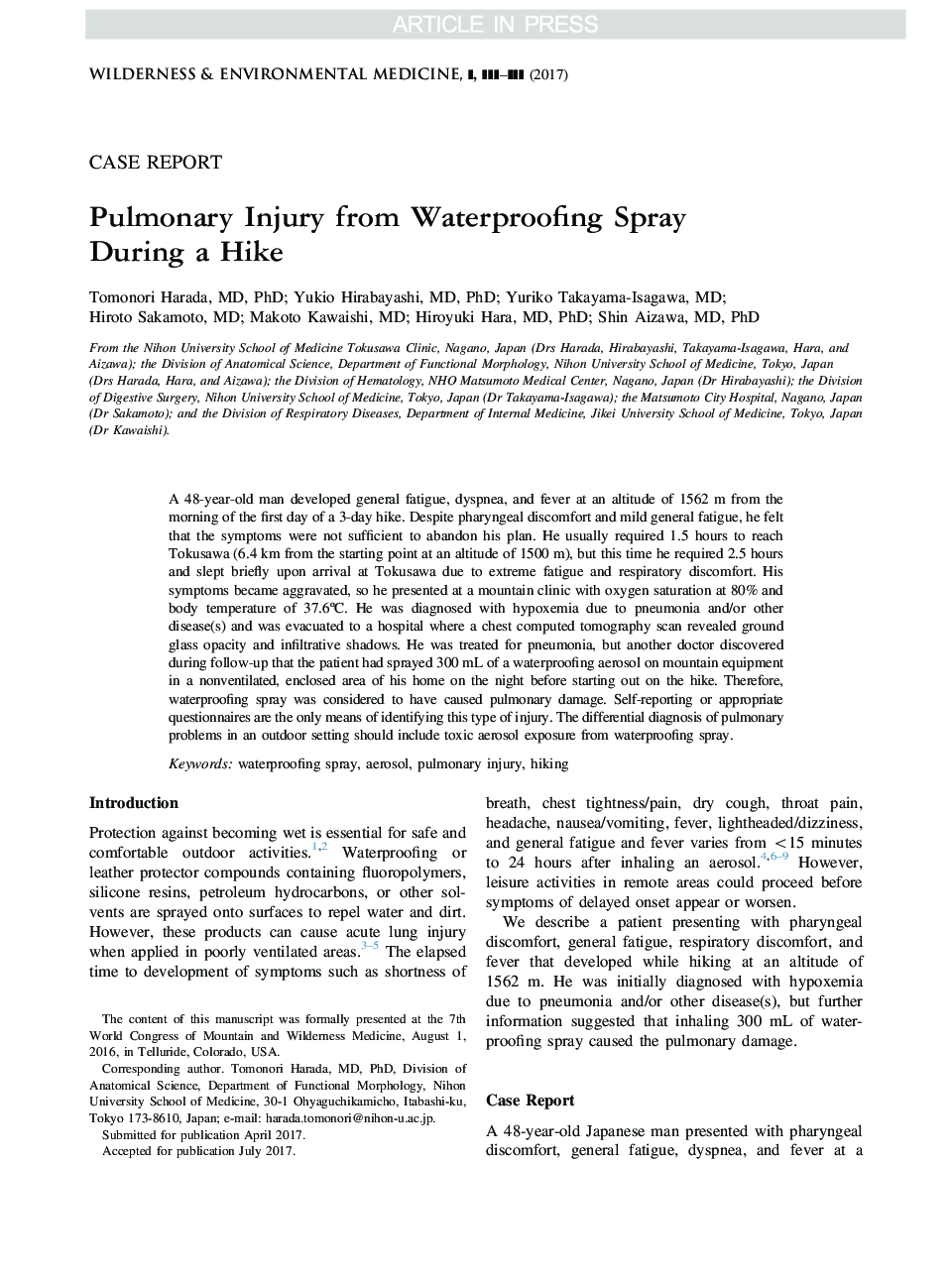| Article ID | Journal | Published Year | Pages | File Type |
|---|---|---|---|---|
| 8558021 | Wilderness & Environmental Medicine | 2017 | 5 Pages |
Abstract
A 48-year-old man developed general fatigue, dyspnea, and fever at an altitude of 1562 m from the morning of the first day of a 3-day hike. Despite pharyngeal discomfort and mild general fatigue, he felt that the symptoms were not sufficient to abandon his plan. He usually required 1.5 hours to reach Tokusawa (6.4 km from the starting point at an altitude of 1500 m), but this time he required 2.5 hours and slept briefly upon arrival at Tokusawa due to extreme fatigue and respiratory discomfort. His symptoms became aggravated, so he presented at a mountain clinic with oxygen saturation at 80% and body temperature of 37.6ºC. He was diagnosed with hypoxemia due to pneumonia and/or other disease(s) and was evacuated to a hospital where a chest computed tomography scan revealed ground glass opacity and infiltrative shadows. He was treated for pneumonia, but another doctor discovered during follow-up that the patient had sprayed 300 mL of a waterproofing aerosol on mountain equipment in a nonventilated, enclosed area of his home on the night before starting out on the hike. Therefore, waterproofing spray was considered to have caused pulmonary damage. Self-reporting or appropriate questionnaires are the only means of identifying this type of injury. The differential diagnosis of pulmonary problems in an outdoor setting should include toxic aerosol exposure from waterproofing spray.
Keywords
Related Topics
Health Sciences
Medicine and Dentistry
Emergency Medicine
Authors
Tomonori MD, PhD, Yukio MD, PhD, Yuriko MD, Hiroto MD, Makoto MD, Hiroyuki MD, PhD, Shin MD, PhD,
